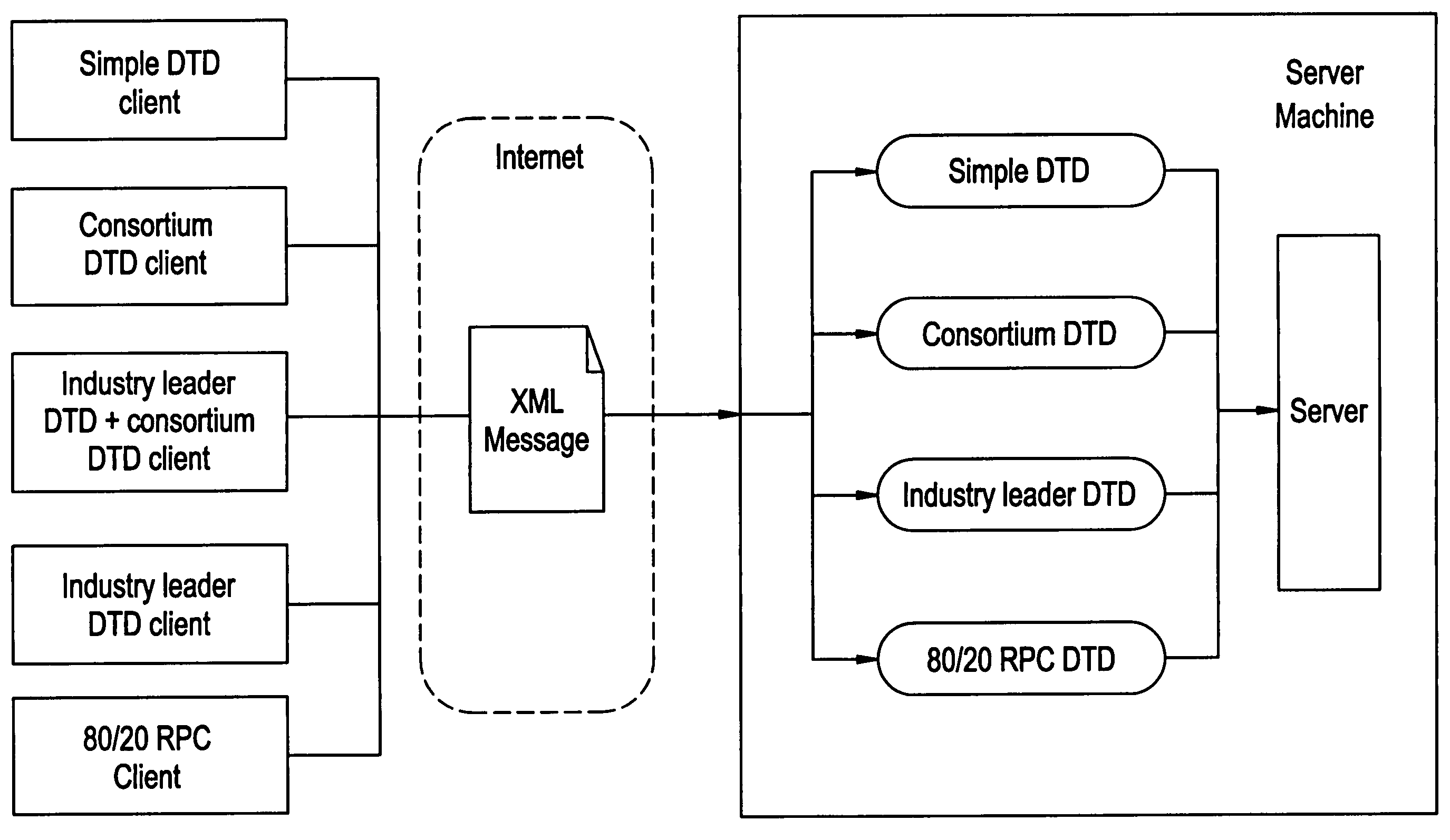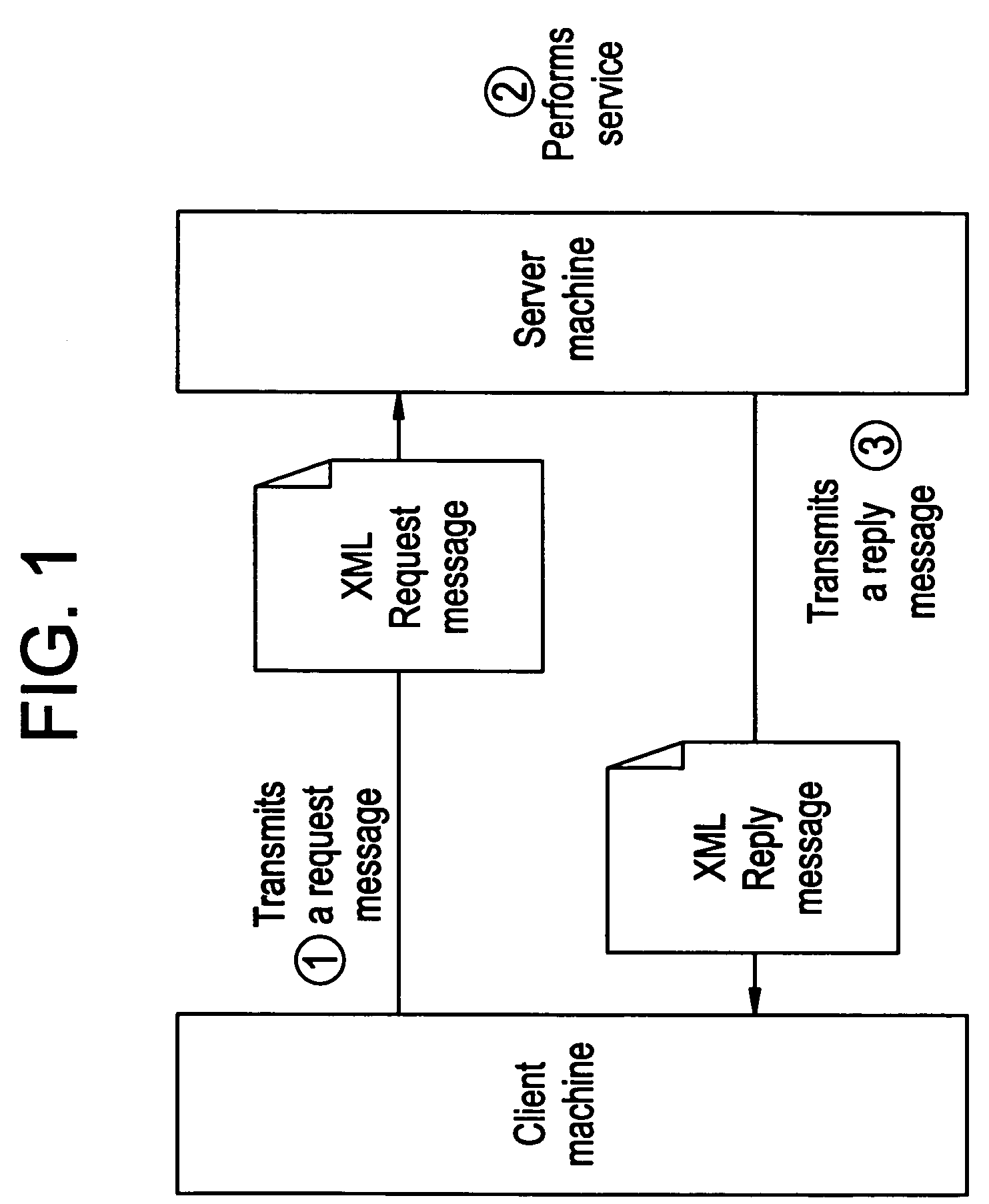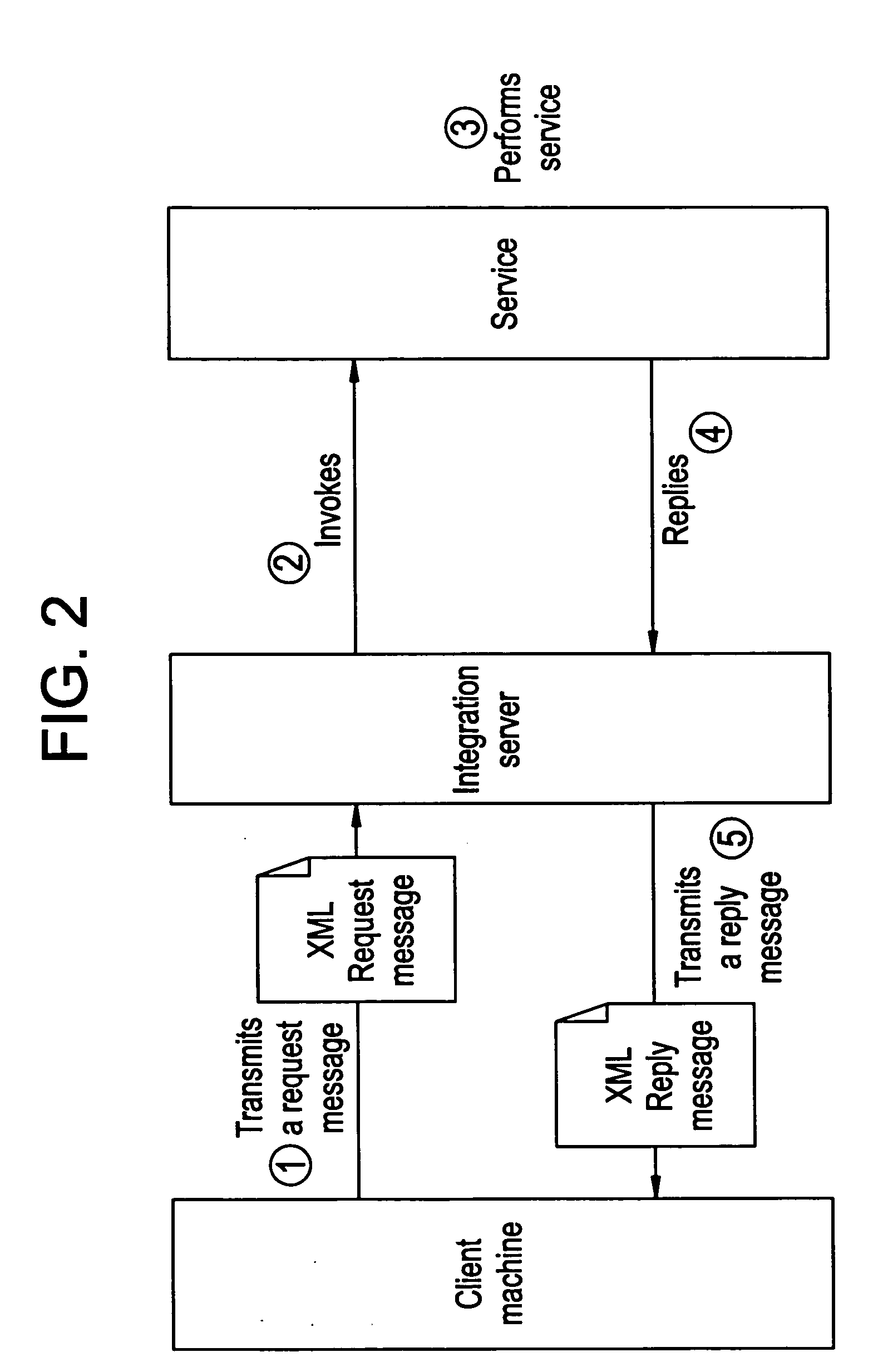XML remote procedure call (XML-RPC)
a remote procedure and procedure technology, applied in the field of xml remote procedure call (xmlrpc), can solve the problems of inability to examine messages for arguments, inability to self-description, and imperfect analogies, and achieve the effect of simple implementation
- Summary
- Abstract
- Description
- Claims
- Application Information
AI Technical Summary
Benefits of technology
Problems solved by technology
Method used
Image
Examples
Embodiment Construction
[0058]Several key aspects of the invention relate to the use of eXtensible Markup Language (XML). XML is a simplification of the ISO Standard Generalized Markup Language (SGML). SGML is a standard document formatting language that enables a publisher to create a single document source that can be viewed, displayed, or printed in a variety of ways. SGML is a large, complex formatting language that is not well suited to the Web. The World Wide Web Consortium (W3C) created XML to make SGML-like functionality available to the broad audience of Internet users. XML is well-understood in the industry, and one can acquire a detailed understanding of it from any number of public sources.
[0059]Like SGML, XML defines a class of markup languages rather than a single markup language. Unlike HTML, which defines a set of markup tags such as and , XML defines the syntax of a markup language without defining the tags that constitute any language. For example, HTML does not conform to the XML syntax...
PUM
 Login to View More
Login to View More Abstract
Description
Claims
Application Information
 Login to View More
Login to View More - R&D
- Intellectual Property
- Life Sciences
- Materials
- Tech Scout
- Unparalleled Data Quality
- Higher Quality Content
- 60% Fewer Hallucinations
Browse by: Latest US Patents, China's latest patents, Technical Efficacy Thesaurus, Application Domain, Technology Topic, Popular Technical Reports.
© 2025 PatSnap. All rights reserved.Legal|Privacy policy|Modern Slavery Act Transparency Statement|Sitemap|About US| Contact US: help@patsnap.com



